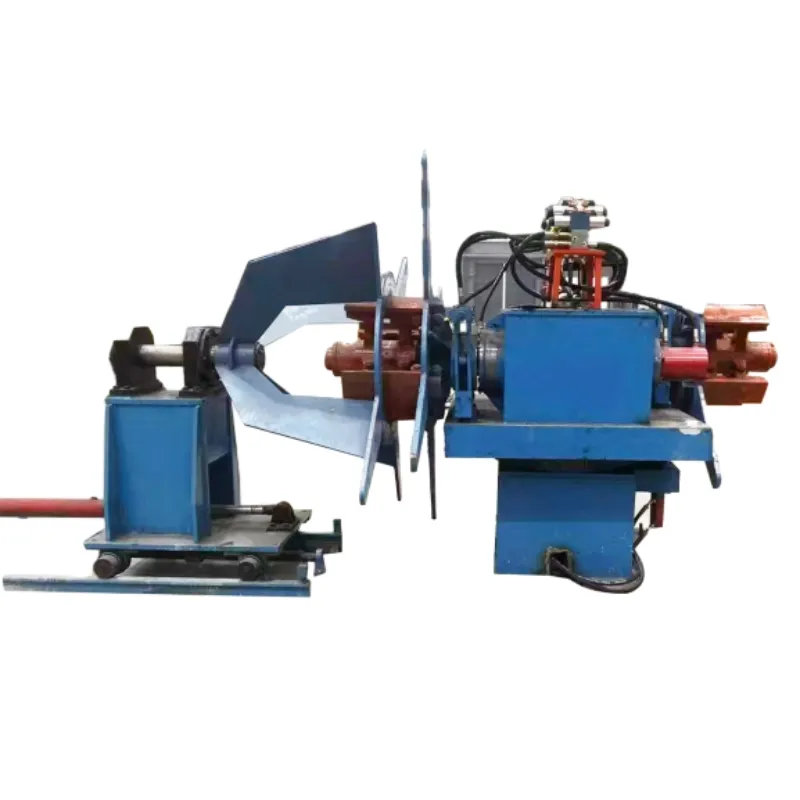cold roll mill
Understanding Cold Roll Mill A Comprehensive Overview
Cold roll milling is a crucial process in the manufacturing of metal products, playing a significant role in shaping and finishing metal sheets and strips. This article aims to explore the fundamentals of cold roll mills, their operations, advantages, and applications.
What is Cold Roll Milling?
Cold roll milling refers to the process of converting flat metal sheets into thinner, more refined materials by passing them through rollers at room temperature. Unlike hot rolling, where metal is heated to achieve malleability, cold rolling takes place at ambient temperature, which provides several benefits to the finished product. The process not only enhances the mechanical properties of the metal but also improves surface finish and dimensional tolerances.
The Process of Cold Rolling
The cold rolling process begins with the selection of raw metal, often in the form of coils. These coils are cleaned and prepared for rolling, ensuring that surface impurities do not affect the quality of the final product. The metal is then fed into a series of rollers, which gradually reduce its thickness. The interplay between the metal and the rollers is critical; the pressure applied by the rollers causes the metal to deform, which in turn refines its structure.
As the metal is rolled, it undergoes strain hardening, a phenomenon where the material becomes stronger and harder due to dislocations within its crystalline structure. This occurs because the metal is forced to change shape without any heat, resulting in a more densely packed arrangement of atoms. Additionally, cold rolling can offer a variety of finishes, including matte, shiny, or textured surfaces, depending on the requirements of the end product.
Advantages of Cold Rolling
Cold roll milling presents numerous advantages over other manufacturing processes. One primary benefit is the increased strength and hardness of the metal due to strain hardening. This makes cold-rolled products ideal for applications requiring high strength and durability.
cold roll mill

Another significant advantage is the superior surface finish achieved through cold rolling. The process produces smoother and cleaner surfaces, which reduces the need for additional finishing processes. This not only saves time but also reduces costs, making it a more economical choice for manufacturers.
Moreover, cold rolling allows for tighter tolerances in dimensions. The ability to achieve thicknesses as precise as ±0.01 mm enables manufacturers to produce components that fit seamlessly into larger assemblies, further enhancing production efficiency.
Applications of Cold Roll Mill Products
The products generated from cold rolling are widely used in various industries. In the automotive sector, cold-rolled sheets are employed for body panels, frames, and other components that require strength, lightweight characteristics, and excellent formability.
In the construction industry, cold-rolled steel is used for structural applications, HVAC systems, and roofing materials. The precision and finish of cold-rolled products make them suitable for architectural designs and aesthetic applications as well.
Furthermore, the electrical industry benefits from cold rolled steel as well, especially in manufacturing transformers and electrical enclosures, where magnetic properties are essential.
Conclusion
Cold roll mills represent a fundamental technology in metalworking, offering a unique combination of strength, precision, and surface quality in metal products. With its multitude of advantages and wide-ranging applications, the cold rolling process is vital for industries ranging from automotive to construction and beyond. As manufacturers continue to seek innovative ways to enhance efficiency and reduce costs, the importance of cold rolling in modern manufacturing will only grow, solidifying its role as a cornerstone in the metal fabrication industry.
In conclusion, understanding the intricacies of cold roll milling provides valuable insight into how this process shapes the materials that form the backbone of many industries today.
-
High Frequency Straight Seam Welded Pipe Production Line-BzZhou Xinghua Machinery Equipment Manufacturing Co., LTD.|Precision Welding, High EfficiencyNewsJul.30,2025
-
High Frequency Straight Seam Welded Pipe Production Line|BzZhou Xinghua|Precision Welding&EfficiencyNewsJul.30,2025
-
High Frequency Straight Seam Welded Pipe Production Line - BzZhou Xinghua|Precision Engineering&EfficiencyNewsJul.30,2025
-
High-Frequency Straight Seam Welded Pipe Production Line-BzZhou Xinghua Machinery Equipment Manufacturing Co., LTD.NewsJul.30,2025
-
High-Frequency Straight Seam Welded Pipe Production Line-BzZhou Xinghua Machinery Equipment Manufacturing Co., LTD.|Precision Manufacturing, High EfficiencyNewsJul.30,2025
-
High Frequency Straight Seam Welded Pipe Production Line-BzZhou Xinghua Machinery Equipment Manufacturing Co., LTD.|Precision Steel Pipe Manufacturing&Industrial EfficiencyNewsJul.29,2025


